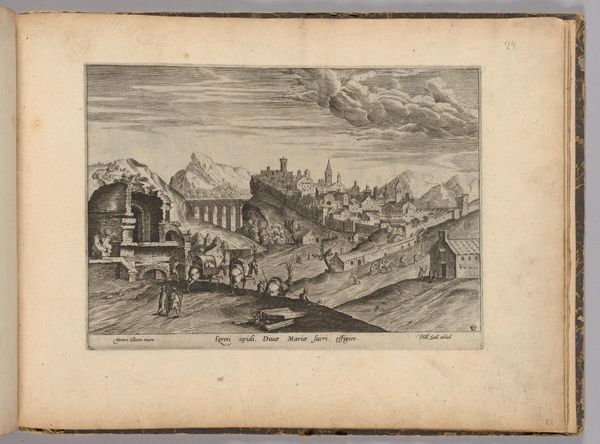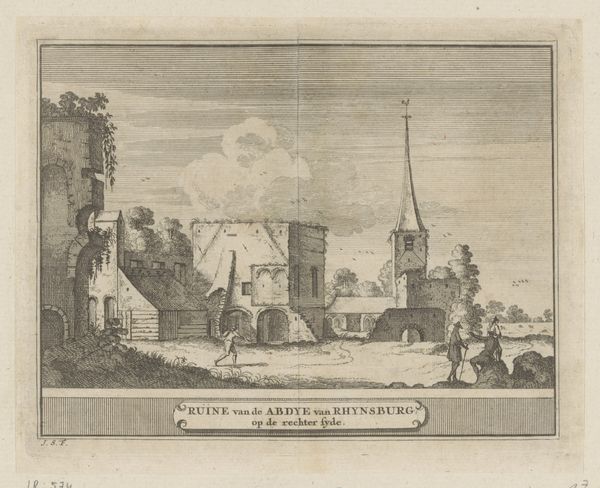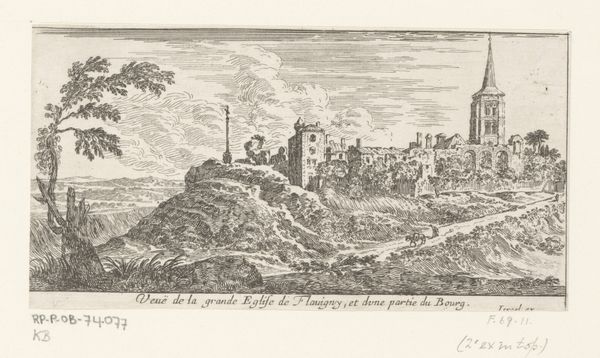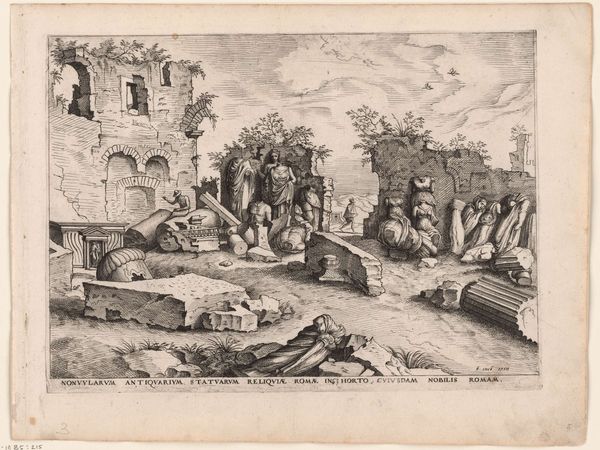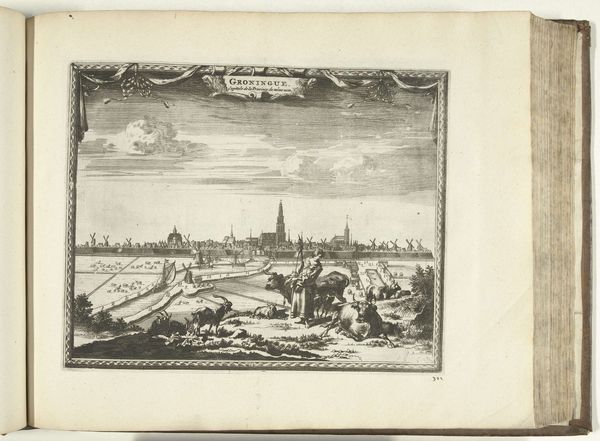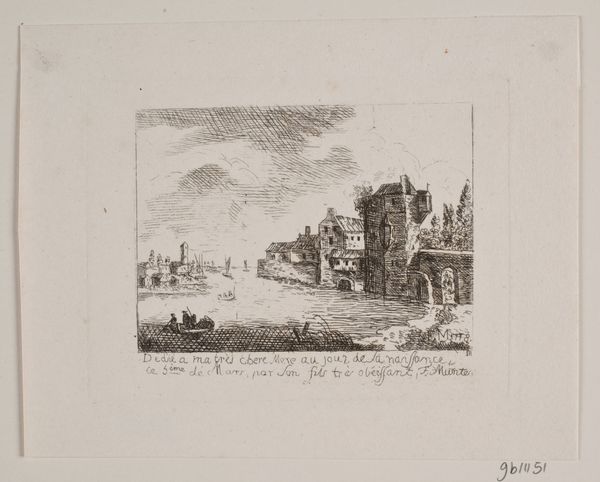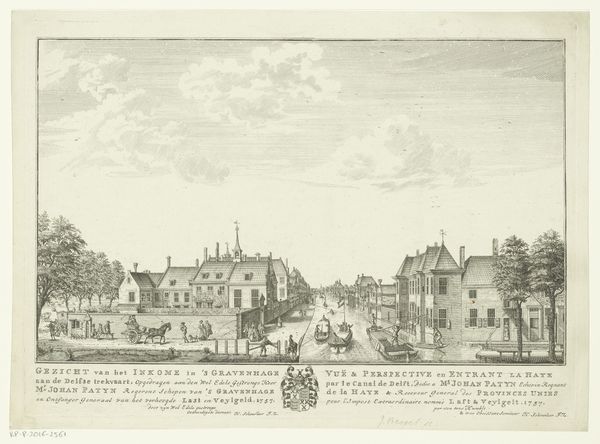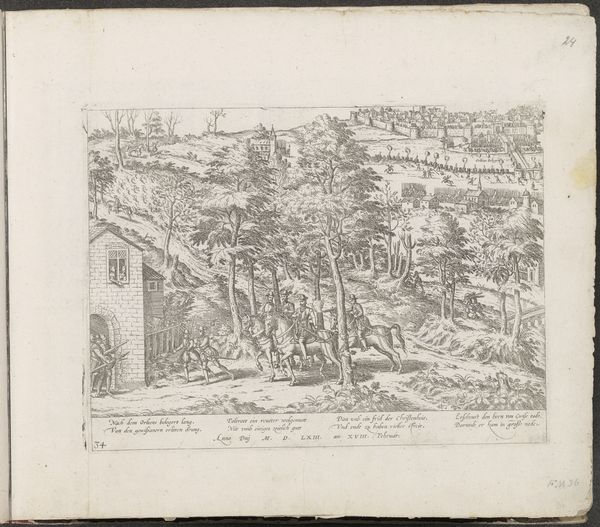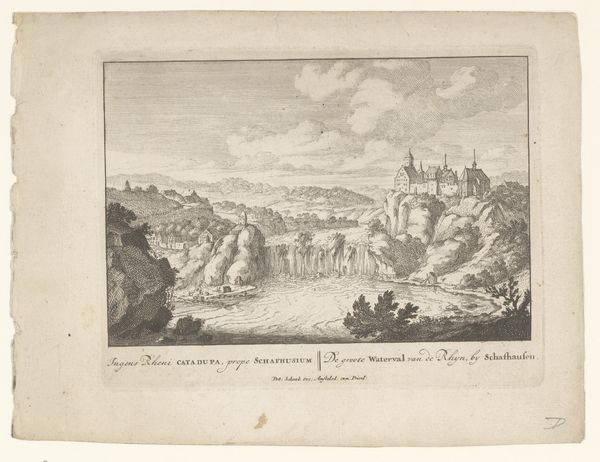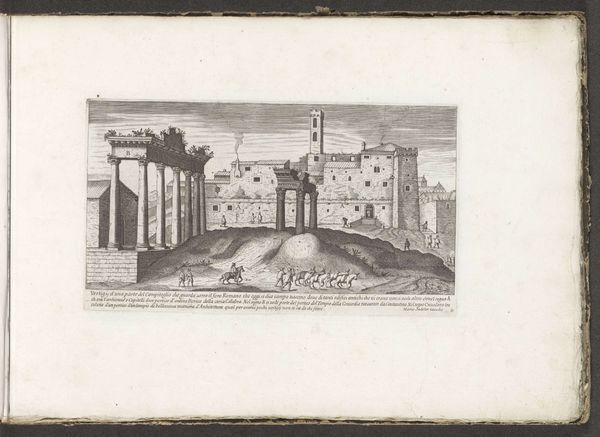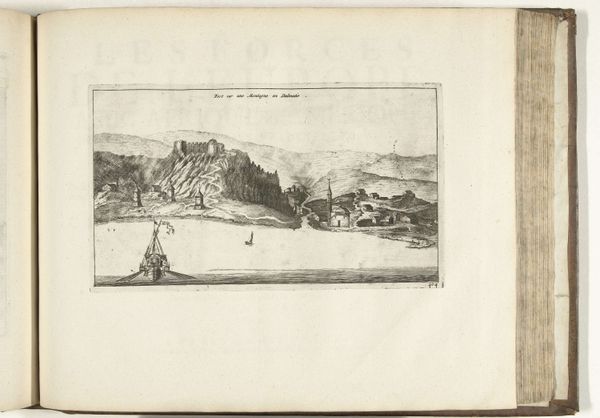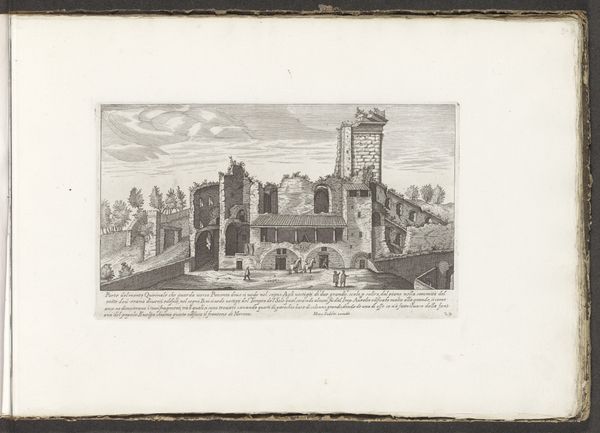
De ontploffing van de kruittoren aan de Wallstrasse, te Berlijn 1740 - 1774
0:00
0:00
drawing, print, engraving
#
drawing
#
aged paper
#
toned paper
#
light pencil work
#
baroque
# print
#
pencil sketch
#
old engraving style
#
personal sketchbook
#
ink colored
#
sketchbook drawing
#
cityscape
#
pencil work
#
history-painting
#
sketchbook art
#
engraving
Dimensions: height 206 mm, width 325 mm
Copyright: Rijks Museum: Open Domain
This engraving captures the aftermath of the Wallstrasse gunpowder explosion in Berlin. The scene is dominated by destruction—buildings reduced to rubble, a stark reminder of the transience of human creation. Consider the recurring motif of ruins throughout art history, echoing the impermanence of even the grandest structures. These images of devastation bear a resemblance to the ruins in Piranesi's etchings of ancient Rome, which speak to the inevitable decay of civilizations. Here, amidst the broken stones, we find a modern counterpart to those ancient ruins, a sobering reflection on human vulnerability. This visual representation of chaos touches a primal chord within us. The fear of destruction and loss, a fundamental human anxiety, surfaces in our collective memory. The image of the gunpowder explosion, much like the eruption of Vesuvius in depictions of Pompeii, serves as a memento mori, reminding us of the precariousness of existence. Such images of destruction persist, recurring in times of conflict and catastrophe, evolving to reflect new forms of devastation. Like a recurring nightmare, they remind us of the cyclical nature of destruction and rebirth.
Comments
No comments
Be the first to comment and join the conversation on the ultimate creative platform.
